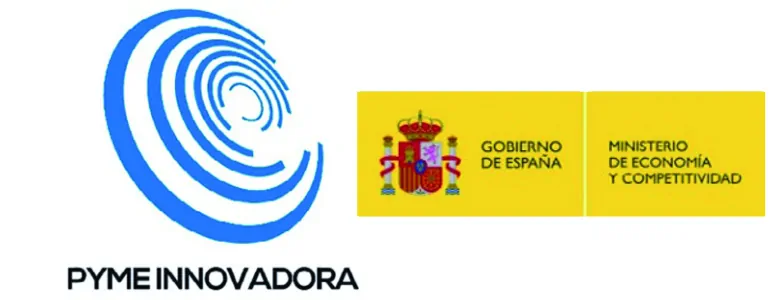
HORIZON EUROPE

 Europeo
Europeo
Expected Outcome:This topic aims at supporting activities that are enabling or contributing to one or several expected impacts of destination 3 “Tackling diseases and reducing disease burden”. To that end, proposals under this topic should aim for delivering results that are directed, tailored towards and contributing to some of the following expected outcomes:
Health care practitioners and providers in low- and middle-income countries (LMICs) and those in high-income countries (HICs) serving vulnerable populations have access to and use specific guidelines to implement prevention interventions able to support adolescents and young people to decrease future risks of developing NCDs. Public health managers and authorities have access to improved insights and evidences on the NCDs related to behaviours and conditions in youth and adolescence. They establish improved health policies to diminish these risks, including to facilitate the deployment of effective public health interventions. Researchers, clinicians and authorities have an improved understanding of the factors that influence the implementation of preventive actions that address risk behaviours in youth and adol...
ver más
Expected Outcome:This topic aims at supporting activities that are enabling or contributing to one or several expected impacts of destination 3 “Tackling diseases and reducing disease burden”. To that end, proposals under this topic should aim for delivering results that are directed, tailored towards and contributing to some of the following expected outcomes:
Health care practitioners and providers in low- and middle-income countries (LMICs) and those in high-income countries (HICs) serving vulnerable populations have access to and use specific guidelines to implement prevention interventions able to support adolescents and young people to decrease future risks of developing NCDs. Public health managers and authorities have access to improved insights and evidences on the NCDs related to behaviours and conditions in youth and adolescence. They establish improved health policies to diminish these risks, including to facilitate the deployment of effective public health interventions. Researchers, clinicians and authorities have an improved understanding of the factors that influence the implementation of preventive actions that address risk behaviours in youth and adolescence.Communities and local stakeholders and authorities are fully engaged in implementing and taking up health interventions and thus contribute to deliver better health. Scope:The European Commission is a member of the Global Alliance for Chronic Diseases (GACD), an alliance of international funding agencies representing over 80% of the world’s public health research funding and the first collaboration of its kind to specifically address non-communicable diseases (NCDs). The GACD supports implementation science to improve health outcomes. This topic is launched in concertation with the other GACD members funding agencies and aligned with the GACD call 2021.
The topic is focused on implementation research about common risk prevention interventions targeting adolescents and youth to reduce the impact of non-communicable diseases (NCDs) in low- and middle-income countries (LMICs) and vulnerable populations in high-income countries (HICs). Proposals should focus on implementation science around evidence-based interventions that promote healthy behaviours, and that have the potential to profoundly reduce the risk of chronic diseases and multimorbidity.
The GACD Alliance is particularly interested in funding projects that focus on interventions that reduce health risk and/or enhance a healthy lifestyle in young people, which the WHO defines as the period from ages 10-24 and includes adolescence (ages 10-19) and youth (15-24). Adolescence and youth mark a period of emerging independence and an important time for laying the foundations of good health. Adolescence and youth is a period in life where patterns of behaviour are established around diet, physical activity, substance use and sexual activity, which can affect their health in the present; in their future adult lives; and even in the next generation. In the transition from childhood to adulthood, young people become increasingly exposed to harmful products such as tobacco, alcohol and drugs, and can experience devastating mental health issues such as depression, anxiety, self-harm, substance abuse and addictions, as well as eating disorders and suicide. Over 150 million young people smoke; 81% adolescents do not meet physical activity guidelines; 11.7% of adolescents partake in heavy episodic drinking; and suicide has emerged as a leading cause of death in young people globally.
All proposals must make the case for why their selected life stage is a critical period for the reduction of NCD risk in the communities where the research will be undertaken. There are a range of evidence-based interventions, including the WHO Best Buys, which aim to reduce the health risks associated with common NCD risk factors. Implementation research is necessary to understand the uptake, accessibility, acceptability, adaption, sustainability and costs of known interventions for use in young adults and adolescents. Applicants are invited to consider interventions at the individual, family, community (e.g., work or school) or population level. Multi-sectoral approaches and a combination of different types of interventions, including biomedical, digital (such as artificial intelligence and big data), socio-behavioural, and/or structural[1] are encouraged. Projects will be expected to build on evidence-based interventions that focus on prevention interventions and strategies that reduce common risk factors for chronic non-communicable diseases, or that promote healthy behaviours. Such interventions/strategies might include, but are not limited to, those in the following three areas: nutrition, physical activity, and/or sleep; tobacco, substance abuse and/or alcohol use; social wellbeing and loneliness . Proposals should be gender-responsive and consider socioeconomic, racial or other factors that relate to equitable impacts of the intervention or barriers to equitable implementation.
Proposals should include implementation research outcomes (e.g. feasibility, fidelity and/or adaptation, spread and/or penetration, acceptability, sustainability, uptake, and cost effectiveness) and where relevant, include service outcomes (e.g. efficiency, safety, effectiveness, patient-centeredness, timeliness). The aim is to harmonise the research common goals and the outcomes assessment of GACD-funded projects in order to maximise the potential for learning across the network and the impact of the initiative as a whole. To this end, all funded teams are expected to use explicit indicators and measures of project context, reach, outcomes evaluation and scale-up potential in their plans and protocols. In this topic, the use of the following measures is encouraged: evidence of uptake of promoted healthy behaviours; evidence of reduction in harmful behaviours; and proxy mental and/or physical health outcomes, if appropriate (pre- and post- intervention PHQ-9 scores, blood pressure, HbA1C, etc.).
Proposals should include a strategy to include policy makers and local authorities, as well as other relevant stakeholders such as community groups. Such engagement should inform the conception and development of the project and should continue throughout the duration of project and afterwards during the knowledge translation phase. Participants that are local stakeholders can be powerful assets to the projects indeed. Their contributions should be nurtured through meaningful engagement throughout all phases of the project, not only as participants in the research undertaken.
[1] Structural interventions are defined as interventions that attempt to change the social, physical, economic, or political environments in order to improve health behaviours and outcomes, altering the larger social context by which health disparities emerge and persist. They can include policy-driven fiscal or legislative changes focused on social and/or commercial determinants of health.
ver menos
Características del consorcio
 :
La ayuda es de ámbito europeo, puede aplicar a esta linea cualquier empresa que forme parte de la Comunidad Europea.
:
La ayuda es de ámbito europeo, puede aplicar a esta linea cualquier empresa que forme parte de la Comunidad Europea.
Características del Proyecto
Gastos relacionados con el personal que trabaja directamente en el proyecto basado en las horas efectivas dedicadas, basado en el coste empresa y ratios fijos para determinados empleados como los dueños de la compañía.
Pagos a terceros externos para realizar tareas específicas que no pueden ser realizadas por los beneficiarios del proyecto.
Incluyen la adquisición de equipos, amortizaciones, material, licencias u otros bienes y servicios necesarios para la ejecución del proyecto
Gastos diversos como costes financieros, certificados de auditoría o participación en eventos no cubiertos por otras categorías
Gastos generales no asignables directamente al proyecto (como electricidad, alquiler u oficina), calculados como un 25% fijo sobre los costes directos elegibles (excepto subcontratación).
Características de la financiación
Información adicional de la convocatoria
Otras ventajas


